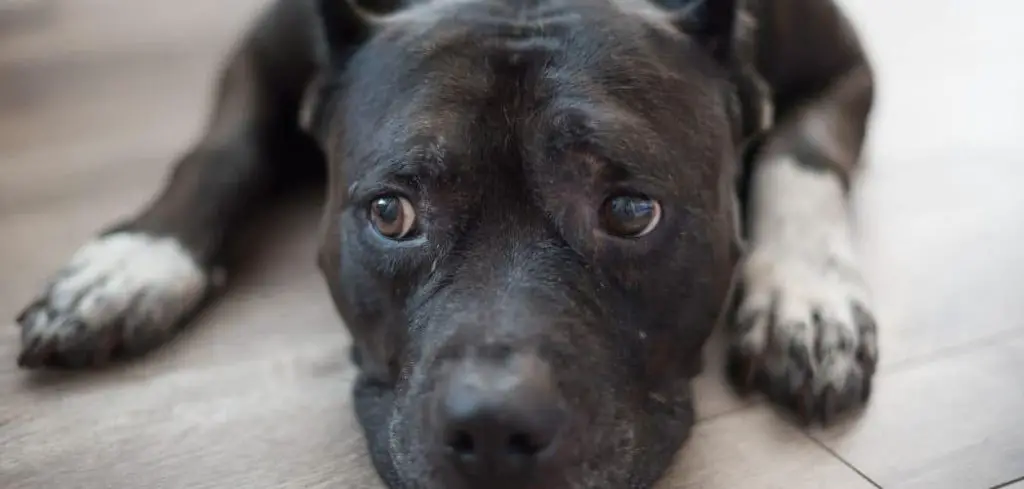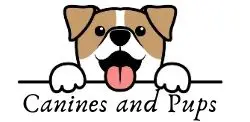If your dog is drinking a lot of water and not eating at the same time, this behavior may be a sign of an underlying health concern.
Drinking a lot of water in dogs, also called polydipsia, can be a natural response to increased physical activity, warmer weather, or changes in diet. However, when it’s paired with a lack of appetite, it may indicate a more serious issue that shouldn’t be ignored.
We outline the most common causes of why a dog is drinking a lot of water and not eating, what symptoms to watch for, and when to seek veterinary help.
Table of Contents
Dog Drinking A Lot of Water and Not Eating: What It Means
When a dog drinks excessive amounts of water but refuses to eat, it’s usually a sign of an underlying health issue rather than simple picky eating. Common causes include kidney disease, liver disease, diabetes, or infections that affect metabolism and appetite.
Drinking more water is often the body’s way of compensating for dehydration or toxin buildup caused by these conditions. Sometimes, stomach irritation or pain can also make a dog avoid food while still feeling thirsty.

Common Reasons Why Dogs Drink A Lot of Water and Stop Eating
1. Kidney Disease
One of the primary reasons why dog drinking a lot of water and not eating occurs is kidney disease.
When the kidneys begin to fail, they can’t filter toxins and waste efficiently.
This causes the dog’s body to become unbalanced and dehydrated, prompting increased water intake.
How it affects appetite:
A build-up of toxins in the blood, called uremia, can make dogs nauseous and lead to a loss of appetite.
Your dog may also vomit or experience bad breath due to this.
Additional symptoms:
Lethargy
Pale gums
Vomiting
Weight loss
Urinating more frequently
Related: Dog not eating but drinking water and acting normal (Explained)
2. Diabetes Mellitus
Another reason why your dog is drinking a lot of water and not eating could be due to diabetes.
Diabetic dogs often exhibit increased thirst because high blood sugar levels draw water out of the body.
How it affects appetite:
Dogs with diabetes may go through phases of increased or decreased appetite.
In the early stages, dogs may eat more, but as the disease progresses or complications arise, they may stop eating altogether.
Watch for:
Sweet-smelling breath
Frequent urination
Sudden weight loss
Cloudy eyes (cataracts)
3. Gastrointestinal Issues
Digestive problems like gastritis, pancreatitis, or intestinal blockages can make your dog stop eating and drink excessive water to compensate for fluid loss from vomiting or diarrhea.
Signs to monitor:
Vomiting
Diarrhea
Bloating
Restlessness
Licking lips excessively
If your dog refuses food and starts gulping water frequently, it may be trying to soothe an upset stomach or clear out something harmful.
Related: Old dog drinking alot of water and not eating (Explained)
4. Infections or Fever
When your dog drinks a lot of water but won’t eat, it could be suffering from a bacterial or viral infection that causes fever and dehydration.
Dogs instinctively stop eating when they’re ill, but the thirst response kicks in to fight dehydration and regulate body temperature.
Additional signs include:
Shivering or panting
Lethargy
Nasal discharge
Red or glassy eyes
5. Liver Disease
Liver dysfunction can also explain why a dog is drinking a lot of water and not eating.
The liver helps detoxify the blood, and when it’s impaired, your dog may become nauseous and refuse food.
Thirst may increase due to fluid imbalance or the need to flush toxins from the body.
Common signs of liver disease:
Yellowing of eyes or gums (jaundice)
Vomiting
Disorientation
Swollen abdomen
6. Side Effects of Medications
If your dog is on medication, particularly steroids or diuretics, it might be drinking more water than usual and refusing to eat due to side effects.
Some medications can cause nausea, while others increase thirst as a direct effect on fluid balance.
Examples include:
Prednisone (steroid)
Furosemide (diuretic)
Antibiotics
7. Poisoning or Toxin Ingestion
Ingestion of toxins, such as antifreeze, household cleaners, or certain human foods like grapes or chocolate, may result in a dog drinking a lot of water and not eating.
These substances can damage internal organs like the liver and kidneys, leading to dehydration, nausea, and refusal to eat.
Warning signs of poisoning:
Vomiting
Diarrhea
Drooling
Seizures
Collapse
Seek immediate veterinary care if you suspect poisoning.
8. Stress or Anxiety
Stress and anxiety are often overlooked but can lead to changes in both appetite and hydration habits.
A dog that’s anxious may refuse food but drink water excessively, especially if it’s panting due to nervousness or pacing around.
Stress triggers include:
New environment
Loud noises (fireworks, thunderstorms)
Separation from owner
Introduction of a new pet
Behavioral changes, restlessness, and digestive upset can accompany this.
9. Dental Problems
If your dog is still drinking water but refusing food, dental pain could be to blame.
Tooth abscesses, gum disease, or oral injuries may make eating painful, especially if the food is dry or hard.
Water is easier to consume, so your dog may still drink normally or even excessively if the mouth is inflamed.
Related: Dog breathing heavy and not eating (Explained)
Signs of dental problems:
Drooling
Pawing at the mouth
Foul breath
Swollen gums
Dog Drinking a Lot of Water and Not Eating and Throwing Up
When a dog drinks excessive water, refuses to eat, and vomits, it’s a sign of serious internal distress such as kidney disease, liver problems, pancreatitis, or poisoning.
The vomiting may be the body’s reaction to toxins or an inflamed stomach, while the increased thirst signals dehydration or organ malfunction.
This combination is not normal and can quickly become life-threatening. Immediate veterinary care is essential to prevent severe dehydration and identify the underlying cause through bloodwork and imaging.
Dog Not Eating but Drinking Water and Acting Normal
If your dog skips meals but still drinks water and behaves normally, it may be due to temporary issues like mild nausea, stress, or boredom with food.
Dogs can occasionally refuse a meal without it meaning illness, especially in hot weather or after eating treats.
Monitor for 24–48 hours—if appetite doesn’t return or other symptoms appear (vomiting, diarrhea, lethargy), schedule a vet visit. Persistent refusal to eat can signal dental pain or early-stage illness that needs attention.
Dog Not Eating but Drinking Water and Sleeping a Lot
A dog that isn’t eating, drinks water, and sleeps more than usual may be experiencing fatigue from illness, infection, or pain. Conditions such as liver disease, diabetes, or kidney problems often cause increased thirst and lethargy.
While extra rest can be normal for older dogs, a sudden change in eating and energy levels is concerning.
Track how long the symptoms last—if they persist for more than a day, contact your vet for a full checkup to rule out systemic disease or organ issues.
Old Dog Drinking a Lot of Water and Not Eating
When an older dog drinks more water but refuses food, it often signals health conditions related to aging, such as kidney failure, diabetes, liver disease, or Cushing’s disease.
These conditions affect metabolism and appetite while increasing thirst. Because senior dogs dehydrate and weaken quickly, changes in eating or drinking habits should never be ignored.
A vet can run simple tests to identify the cause and begin treatment early to maintain comfort and quality of life.
What To Do If Your Dog Is Drinking Lots of Water and Not Eating
If your dog is drinking a lot of water but not eating for more than 24 hours, it’s time to investigate further.
Prolonged refusal to eat combined with polydipsia may indicate a serious medical condition.
Steps to take:
Monitor closely: Track how much water your dog drinks, urination frequency, and other symptoms like vomiting or lethargy.
Check the gums and mouth: Pale or yellow gums, signs of pain, or bad odor could point to systemic or dental problems.
Remove any toxins: Make sure your dog hasn’t ingested harmful substances or spoiled food.
Try different foods: Offer bland diets like boiled chicken and rice to see if appetite returns.
Avoid force-feeding: Forcing food may cause aspiration or distress if your dog is nauseous.
Keep your dog hydrated: Even if it’s not eating, clean water should always be available.
When to See the Vet
You should contact your veterinarian if:
Your dog hasn’t eaten for over 24 hours
Water intake suddenly increases or seems excessive
You observe vomiting, diarrhea, or signs of dehydration
Your dog is lethargic, weak, or in visible discomfort
You suspect poisoning or ingestion of foreign objects
Key Takeaway
When your dog drinks a lot of water but won’t eat, it could be a sign of something as simple as temporary digestive upset—or as serious as kidney failure or diabetes.
This behavior is often a signal that your dog’s body is trying to correct a deeper imbalance.
Early intervention is essential.
If symptoms persist for more than a day or are accompanied by vomiting, lethargy, or behavioral changes, consult a veterinarian immediately.
Prompt diagnosis and treatment can make all the difference in your dog’s recovery and long-term health.
By understanding why dog drinking a lot of water and not eating happens, dog parents can act quickly to protect their furry friend’s well-being.
